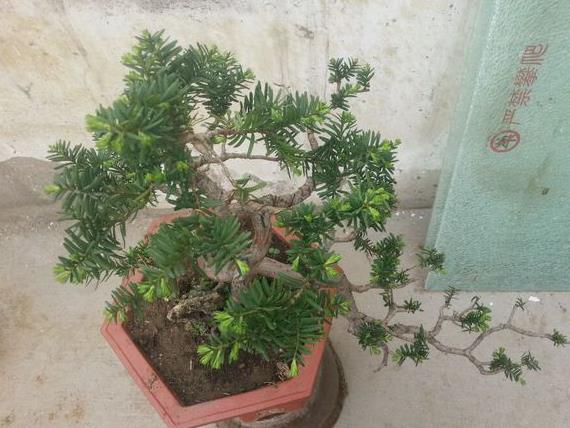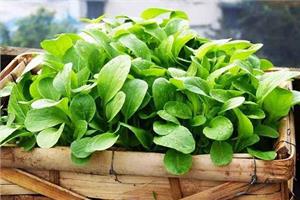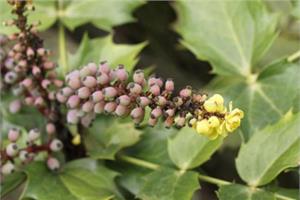Matters needing attention on how to raise and cultivate Aromae
Yarumu, a tufted shrub native to Japan, is a variety with high ornamental value cultivated by Taxus mairei (yew). The flowering period is from May to June and the seeds are mature from September to October. So what do we need to pay attention to when we breed the shackles? Let's get to know it.
Aquaculture methods (basic knowledge) of Artemisia chinensis
The best time for propagation: the propagation of Amur should be carried out before sprouting in early spring.
The best growth soil: Amur should be planted on loose, fertile, acidic soil. Pot cultivation of Artemisia mandshurica is generally better with the mixture of 2 parts of mountain mud and 1 part of rotten leaf soil.
The best growth temperature: Artemisia mandshurica is cold-resistant and is still tall and green at a temperature of-10 ℃. The south can spend the winter in the open air, while the north can be placed in a cold room.
The best growth light: Gyamu likes light, is afraid of heat, and is resistant to cold. In summer, it is necessary to grow in places where the sun is better. If the sun is too strong (usually after 2 o'clock in the afternoon), 50% shading nets and curtains can be used for shading. Balcony scenery can be determined according to the location of the light.
Matters needing attention in the culture of Artemisia elata:
Application of fertilizer: during the spring and summer growth period, thin fertilizer dominated by nitrogen was applied every 15 days, and shoots could be drawn continuously for 2 or 3 times. In autumn, new buds sprout at the top of branches and leaves, and when they are shaped like sesame, they need to be fertilized once to meet the needs of bud development and growth.

Main points of watering: the watering of shackle wood is generally dry and wet.
Generally go out of the room in front of Ching Ming Festival in spring, it is ideal to place balcony or sunny place, it is not suitable to lean on the wall, make it accept more sunshine and rain to promote growth.
Pot soil replacement: the bonsai is generally changed once in 4-5 years, because the organic matter in the basin is limited, and the root growth is more developed, the time interval of changing the basin should not be too long.
Main points of reproduction: Gallium chinense is often propagated by cuttings, either in pots or in the ground.
Cuttings should be carried out before sprouting in early spring, cuttings should be cut from current year-old shoots with a small number of biennial branches, cut into 8-10 cm long as cuttings, and inserted into acidic mountain mud soil. Watering enough water, properly shading, and then maintaining a certain degree of humidity can take root and sprout branches and leaves in early summer, and the survival rate is generally 70% to 80%. After survival, the seedlings can be planted in autumn or the following spring, and pay attention to heart-picking, to promote its early growth of lateral branches, in order to maintain a beautiful tree posture.
Pest control: if the flail wood is kept in a stuffy and unventilated place for a long time, it is vulnerable to the harm of "blowing shell insects" and "bran shell insects". After discovery, 25% imidophos or 5% fenitrothion 800 times solution should be sprayed for prevention and control.
The main uses of Aromae
Garden use
The shape of the shackle is low. Horizontal spread dense growth, feathered leaves dry, not withered all the year round, graceful Yan such as ancient wood, elegant and unrestrained. When the seed is ripe, the aril is bright red and bright, such as a grain of ruby shining in green.
It should be planted in the trees around the courtyard or grass. Potted plants or bonsai can be embellished on several tables in the study and living room. Resistant to pruning, it is a kind of excellent bonsai tree comparable to five-needle pine and sparrow tongue Luohan pine.
Bonsai production
Gallop wood is an ideal material for small and medium-sized bonsai, especially commercial bonsai in the past decade. Its leaves are small and green, branches spread horizontally, its growth is dense, evergreen all the year round, and it is easy to breed and breed. It is not only a good material for making bonsai, but also a good product for indoor viewing.
The production of bonsai is usually made of brown wire and metal wire, and is generally distributed in the shape of a traditional curved dry cloud. However, after bonsai shaping, due to other reasons such as ornamental, it is easy to appear branches and leaves glued off, some branches thin, and other phenomena, which affect the appreciation value of Aromae.
If you want to know more about it, you can continue to follow the No.1 Home Network.
Related
- Wuhan Hospital Iron Tree Blooming Result Was Instantly Frightened by the Gardener Master
- Which variety of camellia is the most fragrant and best? Which one do you like best?
- What is the small blue coat, the breeding methods and matters needing attention of the succulent plant
- Dormancy time and maintenance management of succulent plants during dormancy
- Minas succulent how to raise, Minas succulent plant pictures
- What are the varieties of winter succulent plants
- How to raise succulent plants in twelve rolls? let's take a look at some experience of breeding twelve rolls.
- Attention should be paid to water control for succulent plants during dormant period (winter and summer)
- Watering experience of twelve rolls of succulent plants
- Techniques for fertilizing succulent plants. An article will let you know how to fertilize succulent plants.



